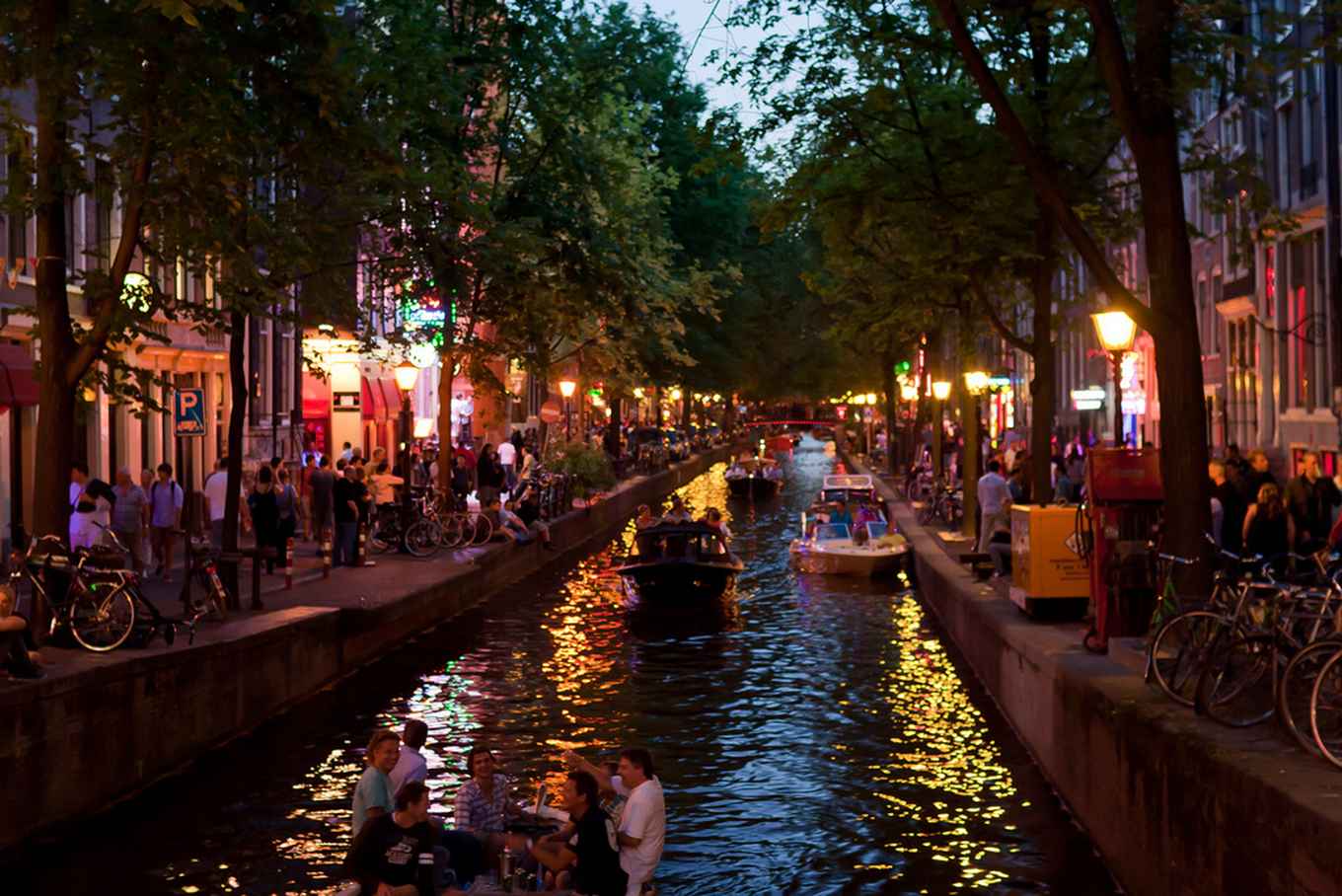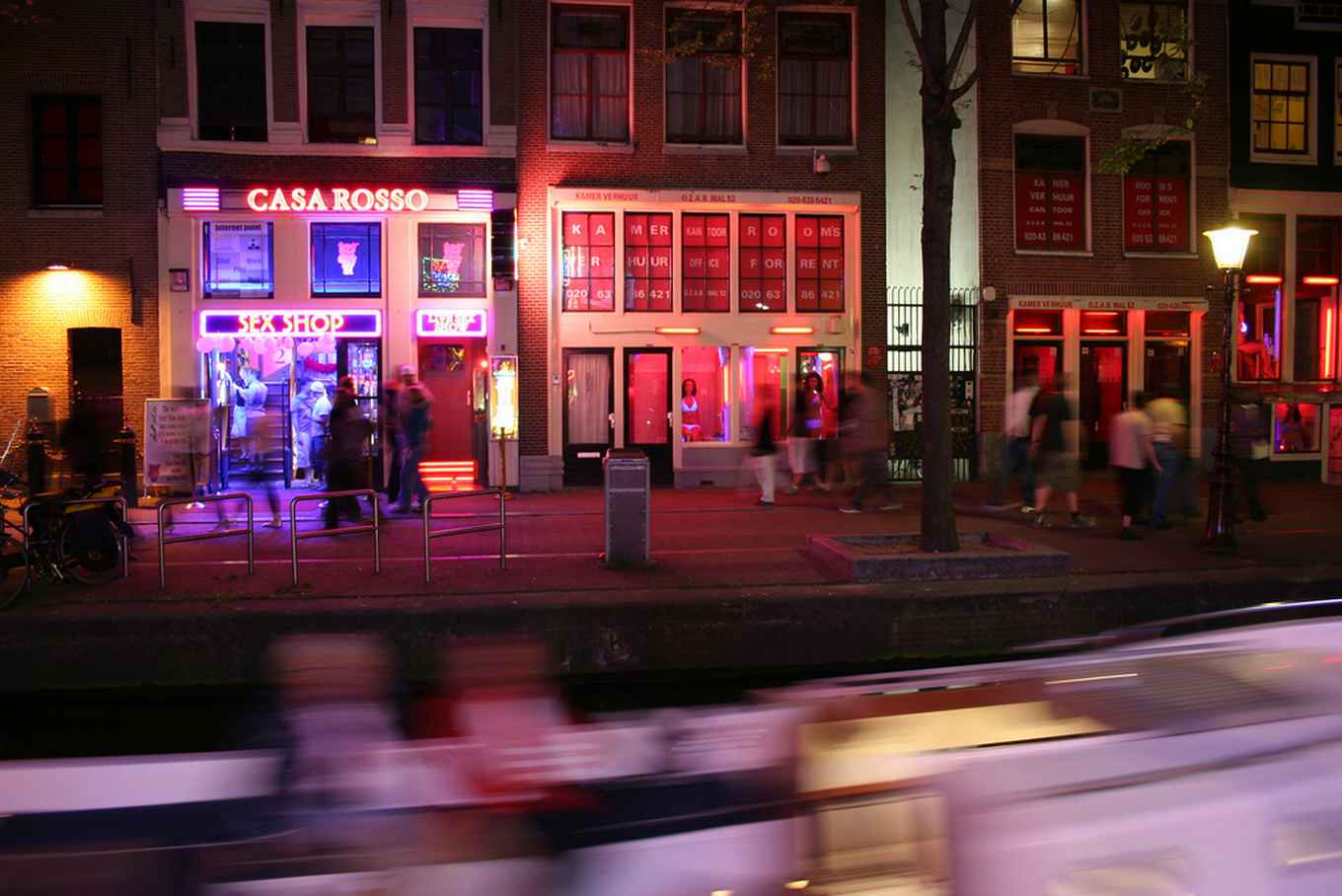Observations from behind an Amsterdam window - By Fenne Pinkster
Publication date 23-06-2014

This evening, the red light district seemed an entirely different place. Sitting at our window seats, hordes of tourists slowly passed us by: groups of Asian visitors with guides waving here-I-am-umbrellas, Spanish and Italian parents with baby prams and British men in t-shirts out for a stag party curiously looking around. While many of them do not seem quite at ease, they are present in such great numbers that they - rather than the junkies and sex customers in the past - dominate the streetscape. Elsewhere in the canal belt, the growing numbers of tourists is increasingly criticized by residents and politicians in local newspapers, coining terms like ‘disneyfication’ and warning that Amsterdam should not become the next Venice. In the case of the red light district, however, their presence has also provided the area with a certain degree of ‘normalcy’ and safety for tourists to experience this particular urban spectacle.
The transformation of the neighborhood from a landscape of prostitution and a space of immorality and illegality to a space of tourism has been linked to local policies of the Amsterdam City Government to ‘reclaim’ the red light district from organized crime (Aalbers & Deinema, 2012; Hubbard, 2012). In collaboration with law enforcement, housing associations, real estate developers and other private investors, Project Emergo – which has also been dubbed Operation 1012, referring to the local zipcode – started in 2007 and included the buying up of buildings owned by property owners involved in illegal activities and redeveloping them to stimulate commercial gentrification (Municipality of Amsterdam, 2011). Although stimulating tourism was never the explicit goal of this project, the cleaning up of the district has also made the area more accessible to mainstream tourists.

Today, no other neighborhood in Amsterdam more embodies the idea that urban places increasingly function as objects of consumption in their own right (Gotham, 2002). Yet while observing this tourist spectacle last week from behind my own window, seeing the cameras flash in the dark and remembering the red light district during my childhood, the question that occupied me was what kind of place is better: a place of exploitation, that looks and feels like one; or a place that gives the impression of tourist attraction, but where in fact the women behind the windows are now doubly exploited, not only by the sex industry, but also by all those tourists taking their pictures.
Fenne Pinkster
Fenne Pinkster is assistant professor in Urban Geography at the Department of Geography, Planning and International Development Studies at the Universiteit van Amsterdam. Her research focuses on what she likes to call the geography of everyday life in cities; an approach that takes resident perspectives as a starting point. Fenne is particularly interested in questions relating to the meaning of neighborhoods for structuring the lives of residents and the way in which their lives become embedded in the neighborhood in which they live (or not).
Tips for further reading
Aalbers, M.B. & M. Deinema (2012) Placing prostitution. City, 16 (1–2), p 129-145
Gotham, K.F. (2002) Marketing Mardi Gras: commodification, spectacle and the political economy of tourism in New Orleans. Urban Studies, 39 (10), p 1735-1756
Hubbard, P (2012) Afterword: exiting Amsterdam’s red light district. City, 16 (1–2), p 195-201
Municipality of Amsterdam (2011) Emergo. De gezamenlijke aanpak van de zware (georganiseerde) misdaad in het hart van Amsterdam, Amsterdam: Boom